Hoshizuna-no-Hama, which in English translates to “sand in the shape of a star,” is a lovely beach on an island in Okinawa, Japan. The little five and six-point stars concealed beneath the sands are a unique characteristic of this beach sanctuary surrounded by crystal blue seas. This natural beauty has become a popular tourist destination in the region.
Continue reading to learn more about Hoshizuna Okinawa’s star and sand beach, as well as why it should be on your list of must-see tourist destinations in Japan.
What is Hoshizuna Okinawa’s Star Sand Beach?
Okinawa Prefecture is well-known for its gorgeous, clean beaches, which attract an increasing number of international visitors to its many resorts and hotels each year.
Taketomi-jima is one of the numerous islands that make up Okinawa, and on its northern borders lies a little beach known as Hoshizuna-no-Hama, which translates to ‘Star Sand Beach.’
If you look closely at the sand particles on this beach, you’ll see that it’s made up of unique forms of small stars that are an extremely unusual find and difficult to locate in any other region of Japan.
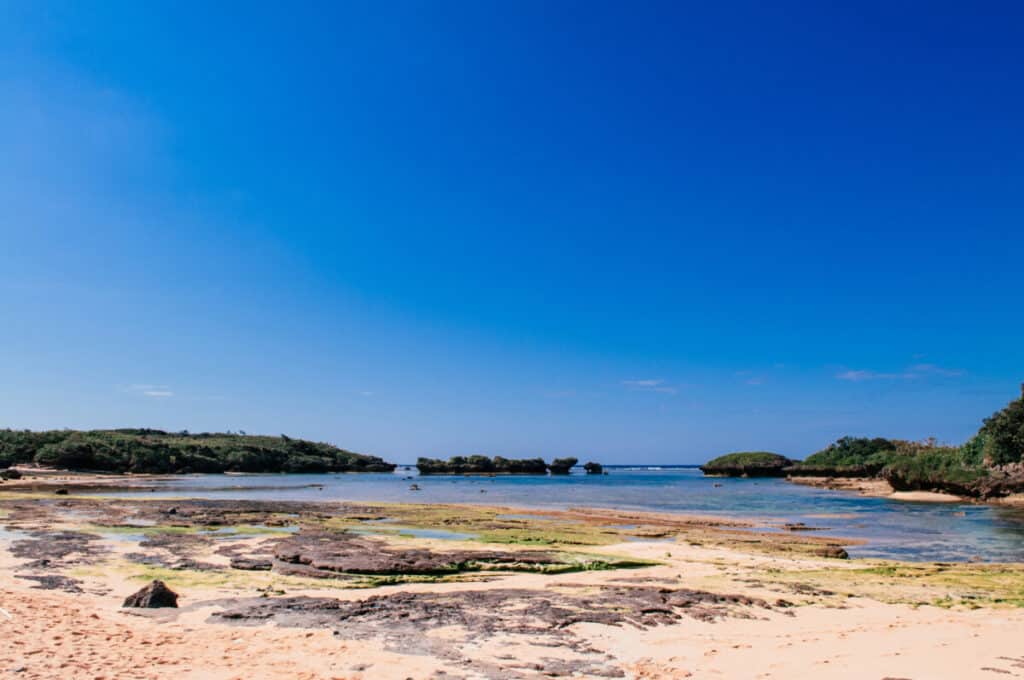
Does the Sand at Hoshizuna Okinawa’s Star Sand Beach Actually Look Like Stars?
Unlike other beaches, the sand of Hoshizuna Beach and other nearby Japanese beaches is made out of the remains of earlier species rather than rocks and minerals. Each tiny star is the exoskeleton of Foraminifera, which are single-celled creatures. This suggests that the sand was once part of a living creature in the Pacific Ocean, even if it is no longer alive.
The water transports the shells and exoskeletons of these tiny creatures as it washes up on the beach, forming the distinctive coastline.
Baculogypsina sphaerulata, a star-shaped species of Foraminifera, is found exclusively on East Asian coral reefs, making its unique sand form one of the most unusual in the world.
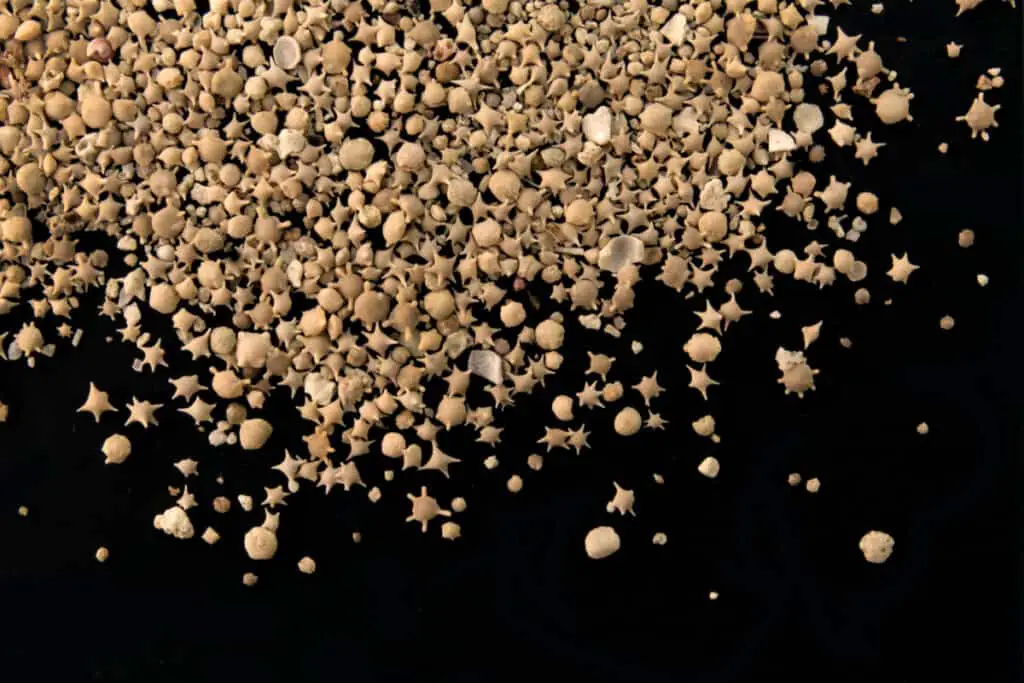
These exoskeletons are members of the Calcalinidae family and reside in the seagrass at the ocean’s bottom. They’re only a millimeter across on average, making them appear relatively small.
How Does the Star Sand Appear?
The star-shaped grains of sand, which are just millimeters in size, are difficult to see at first, but when they adhere to your fingers and toes, you begin to discover that they are different from typical specks of sand. With their 5 or 6 pointed spines, the exoskeletons give them the appearance of stars.
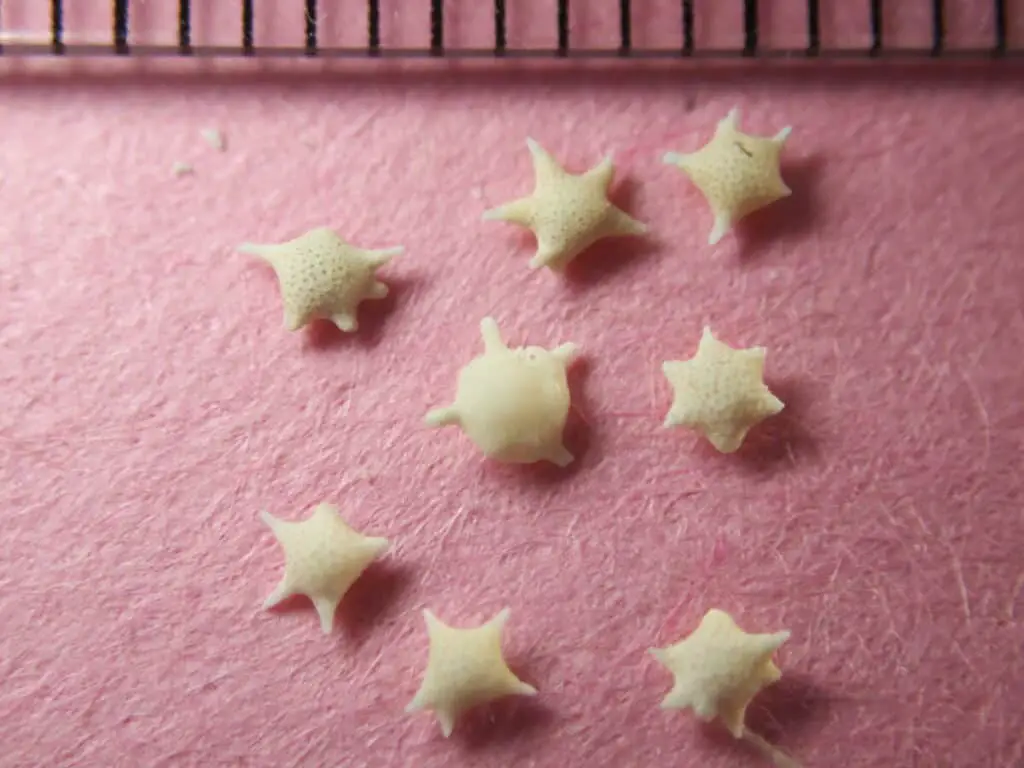
These structures let them migrate from one location to another and act as a storage area for diatoms, a type of algae they eat. When these protists die, their exoskeletons are left behind.
What is the Best Time to Find Star-Shaped Sand on Hoshizuna Okinawa’s Star Sand Beach?
It’s advisable to look for these star creatures and their exoskeletons after a typhoon if you want to find a large number of them. They’ll have loosened from the bottom and been washed ashore by large waves driven by high winds.
However, if you’re on the adjoining Iriomote Island, Okinawa’s second-biggest island, you’ll see them all over.
Look closely in shallow waters since so many of them are thriving at this stretch of the shore. They try to anchor themselves using marine algae.
Hoshizuna Beach Location Via Google Maps
What is the Local Legend Behind Hoshizuna Okinawa’s Star Sand Beach?
According to local folklore, these little star creatures are said to be the child of the North Star and the Southern Cross. Their children were claimed to have been born in Okinawa’s sea, but a serpent consumed them all, leaving only their skeletons behind. These skeletons floated out to sea and soon reached Taketomi-Jima’s coastline.
This Star Sand Beach in Okinawa is a must-visit if you want to be literally amazed by the natural phenomenon. Enjoy the vibrant starry beach.
Where is Hoshizuna Okinawa’s Star Sand Beach Located?
The Yaeyama Islands, which are located off the coast of Japan, include the Taketomi, Hatoma, and Iriomote islands, which are home to the star sand. They are the country’s southernmost and westernmost inhabited islands.
However, the famous Star-sand Beach can be found on Iriomote Island’s northern point. Unlike many major city tourist attractions on the country’s mainland, visitors to these islands enjoy a tropical escape.
Tourists should arrive prepared to relax as well as uncover amazing small stars in the beach areas.
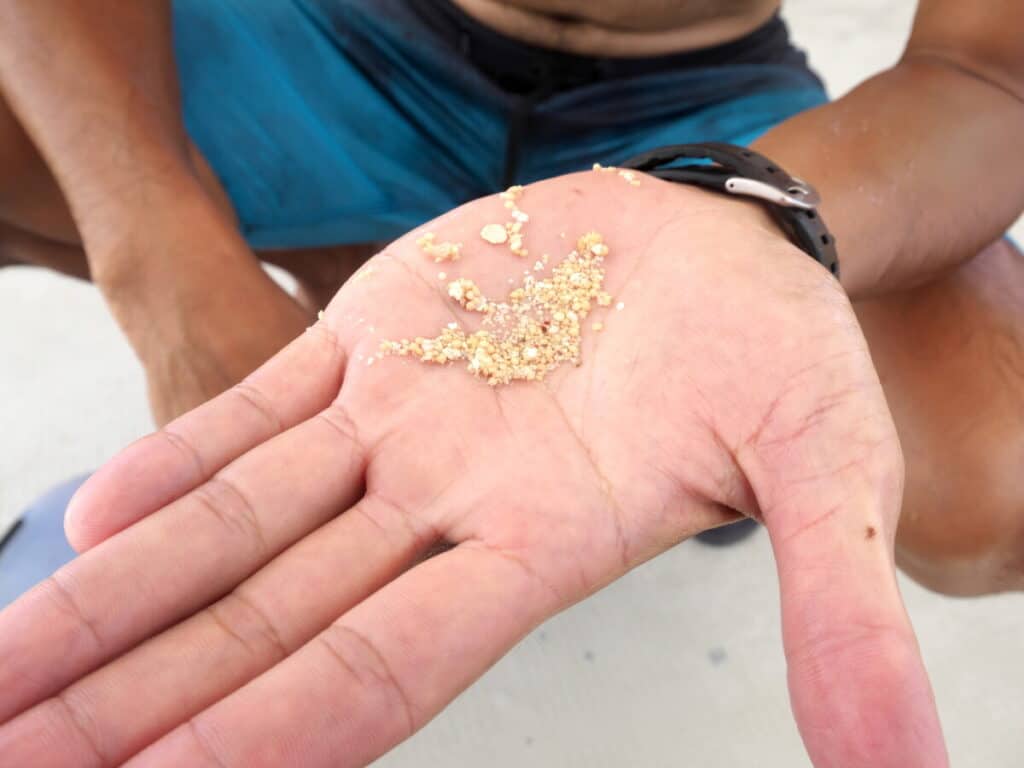
Why Visit Iriomote Island?
The second biggest island on Okinawa is Iriomote. It is primarily underdeveloped, with deep rainforest and mangrove forests covering about 90 percent of the territory.
Iriomote Ishigaki National Park, Japan’s southernmost national park and one of its most distinctive, covers a large portion of the island.
Tours of Iriomote’s abundant natural environment, such as sea and river kayaking, fishing, and sailing, are among the island’s main attractions.
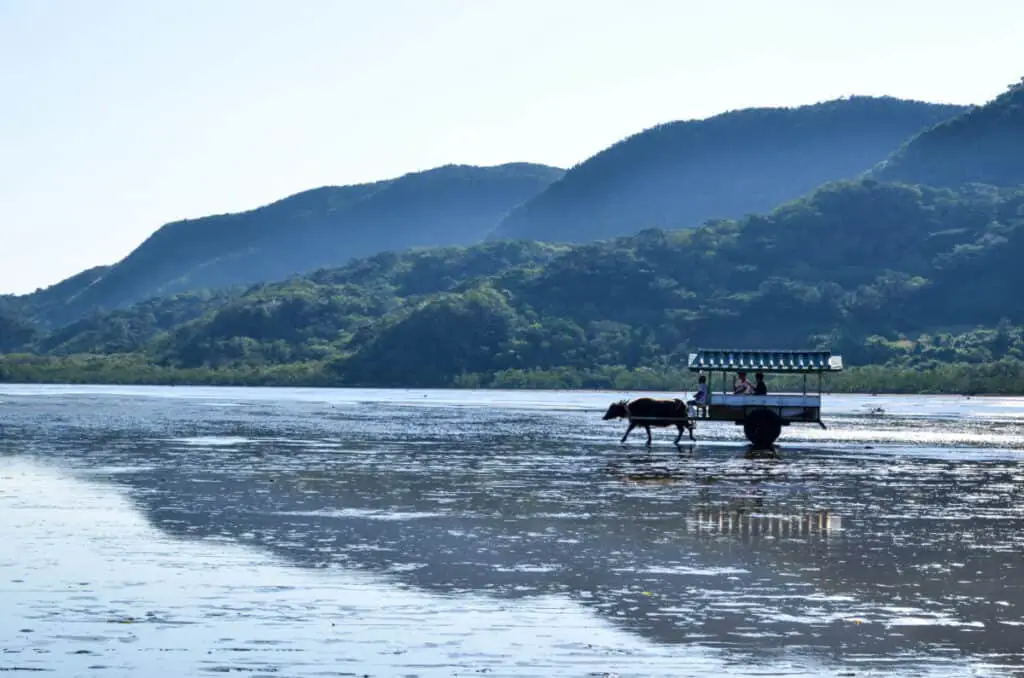
Beaches, snorkeling, and numerous hiking paths, the most strenuous of which is a 12-mile journey through the heart of the island that experienced and well-prepared hikers should only undertake, may be enjoyed either on tours or independently.
Can You Collect the Star-Shaped Sand?
Some individuals travel to Hoshizuna-no-Hama to particularly look for star-shaped sand, prompting local officials to make it illegal to take the unusual sand home.
The internet, particularly social media, has dramatically increased the popularity of Hoshizuna-no-Hama beach, which has proven to be both a curse as well as a blessing.
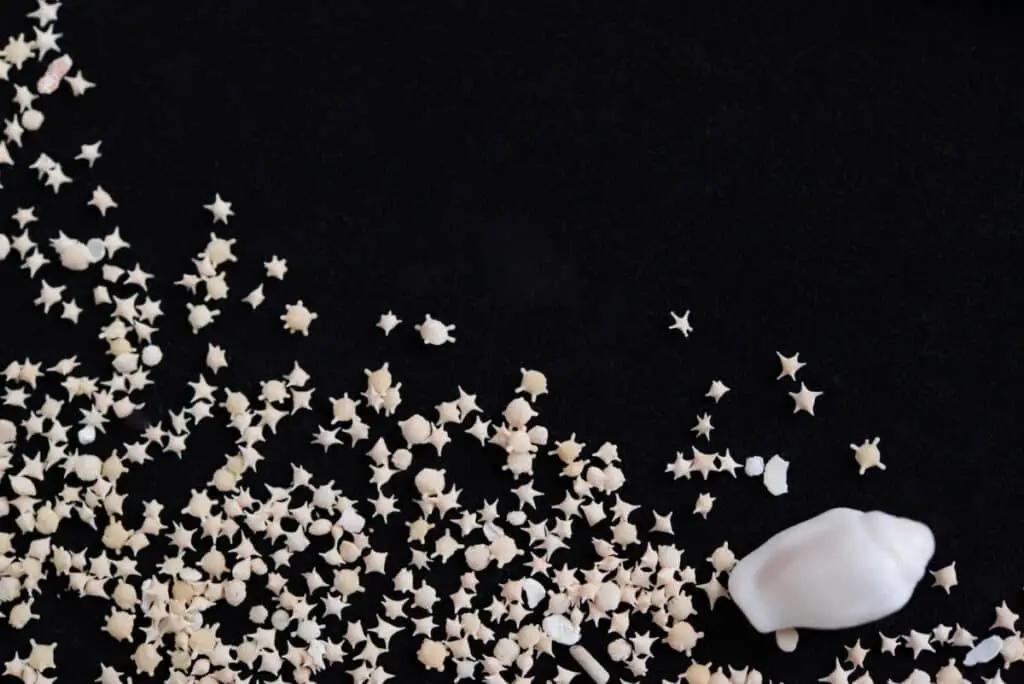
Despite the apparent benefits to local businesses, the increased number of tourists has increased the amount of star-shaped sand taken from the beach.
As a result, the ocean can’t seem to wash up enough of it fast enough to compete with people taking the grains home as souvenirs.
To help safeguard the star sand for future generations to enjoy, clarify whether or not it is authorized at the specified beach before bringing any home.
Do Other Star-Shaped Beaches Exist in Japan?
The most renowned star sand beach on Okinawa is Hoshizuna-no-Hama. However, it isn’t the only one.
On the nearby islands of Tokashiki, Taketomi, and Hatoma, there are other beaches like these where star-shaped sand washes up along its shores.
Star-Sand Offers a One-of-a-Kind Solution to the Problem of Climate Change-Induced Sea Level Rise
A 2014 scientific study headed by University of Tokyo academics proposes a novel solution to the problem of increasing sea levels as a result of climate change: breeding foraminifera to restore beaches.
While others have done smaller-scale studies breeding star sand, this research concentrated on a much bigger scale over a much longer length of time.
It took place on the island of Tuvalu, north of Fiji, and is one of several being done by experts across the world focusing on beach replenishment.
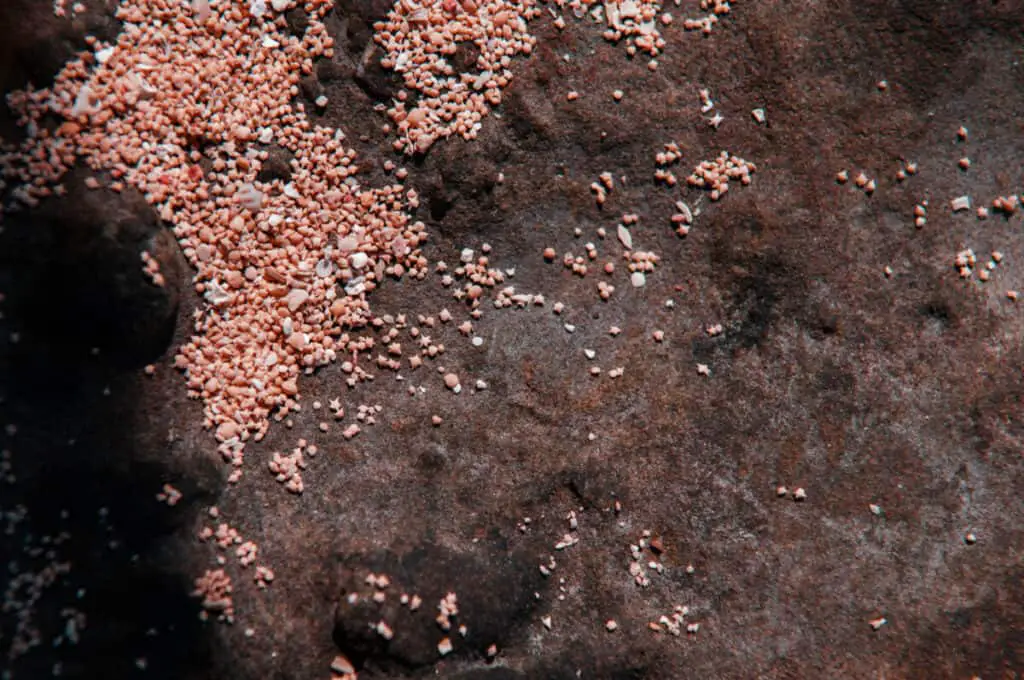
The researchers want to evaluate the viability of cultivating star sand all over the Pacific coast in this way to conserve the coasts.
The study yielded a slew of exciting findings, the most notable of which was the first-ever effective asexual reproduction of foraminifera under artificial settings.
Many factors, such as sunshine, algae development, and water movement, may have limited the amount of star sand that grew and multiplied.
Still, the researchers’ first success will likely lead to additional studies and perfected approaches.
“There are substantial virtues to growing Foraminifera as a countermeasure against sea-level rise,” they write in their conclusion, “but technical challenges have to be overcome.”
Although employing forams as a technique of coastal rejuvenation has yet to be shown, this study shows that huge batches of star sand may be bred in an artificial environment, which is an essential first step towards using star sand to rescue the shoreline.
Other Popular Tourist Attractions Found Near Hoshizuna Okinawa’s Star Sand Beach
Nishinohama Beach
During the warmer months of summer, the park is bustling with visitors who are participating in a variety of marine and beach activities, including families and windsurfers. Barbecuing facilities are also available in the park.
The white of the one-mile sand beach and the green of the pine forests are represented by the Nishiki in Nishikinohama.
Nishinohama Beach Location Via Google Maps
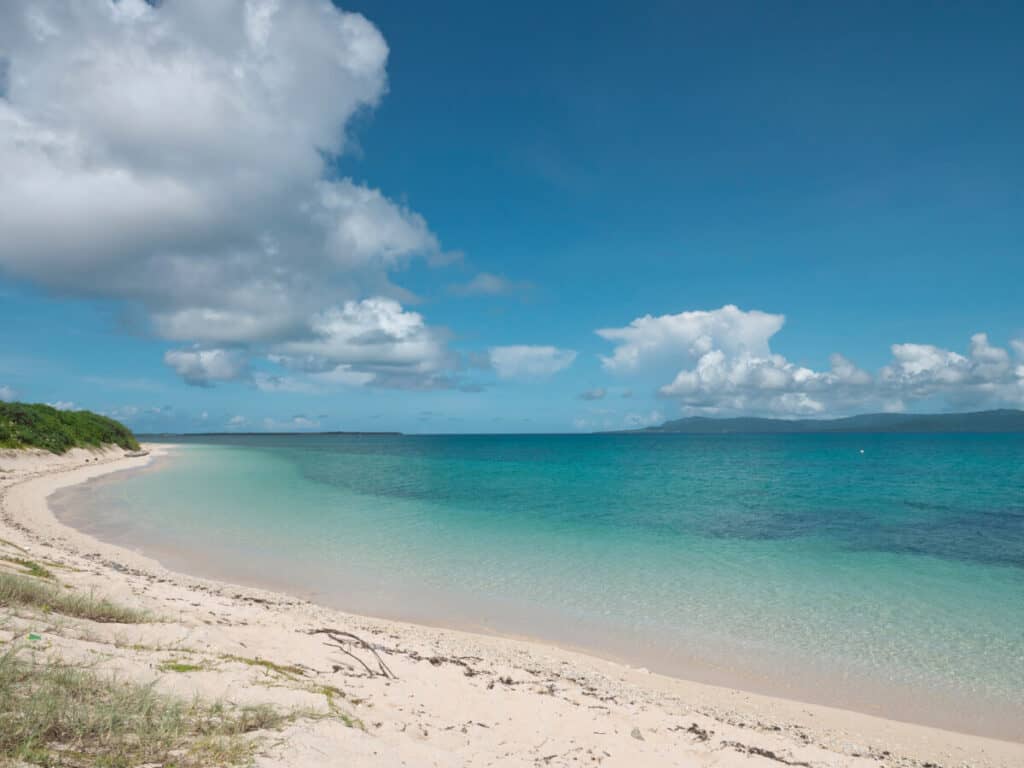
Nishinohama beach has long been regarded as a beautiful pristine natural environment, and it has been named one of Okinawa’s top 100 greenest spots.
Pinaisara Falls
The Pinaisara Falls are Okinawa Prefecture’s highest waterfall, with a vertical plunge of around 180 feet.
The falls are only accessible by a 30–40-minute kayak journey along a mangrove-lined river followed by a 30–40-minute climb into the jungle on the island of Iriomote.
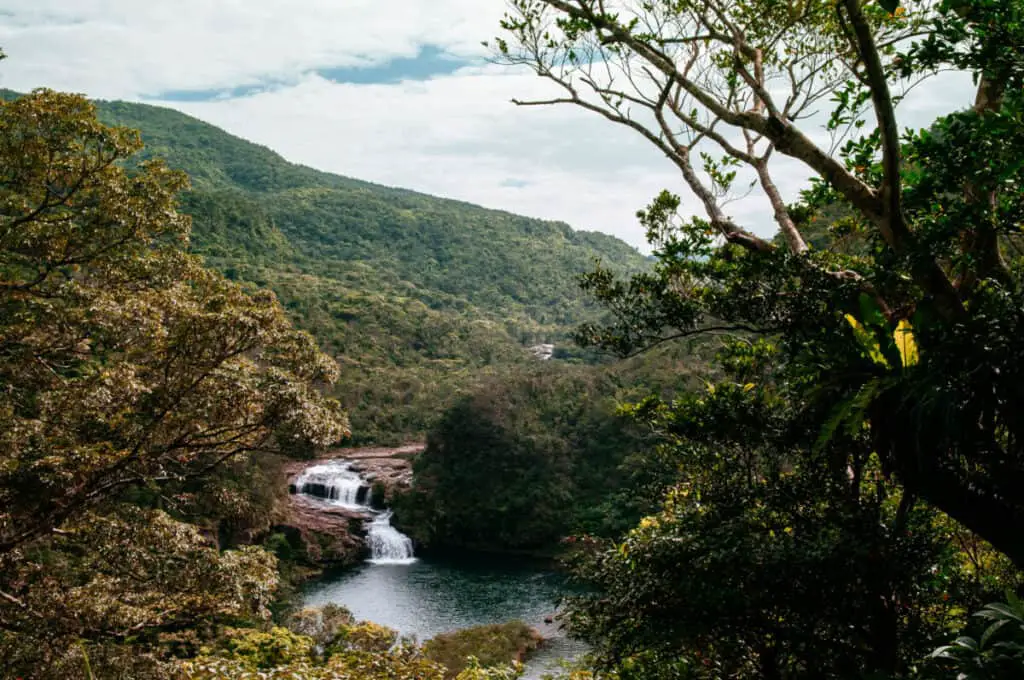
Half-day trips tempt travelers to the plunge pool at the waterfall’s base, where they may cool off while also enjoying lunch in the surrounding forest.
Hiking trips that last all day go all the way to the top of the waterfall and need a certain degree of athleticism.










